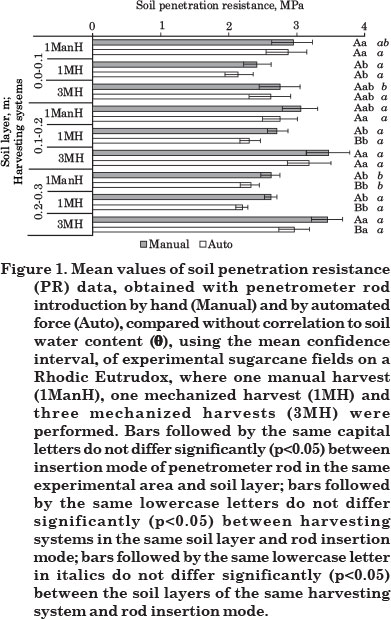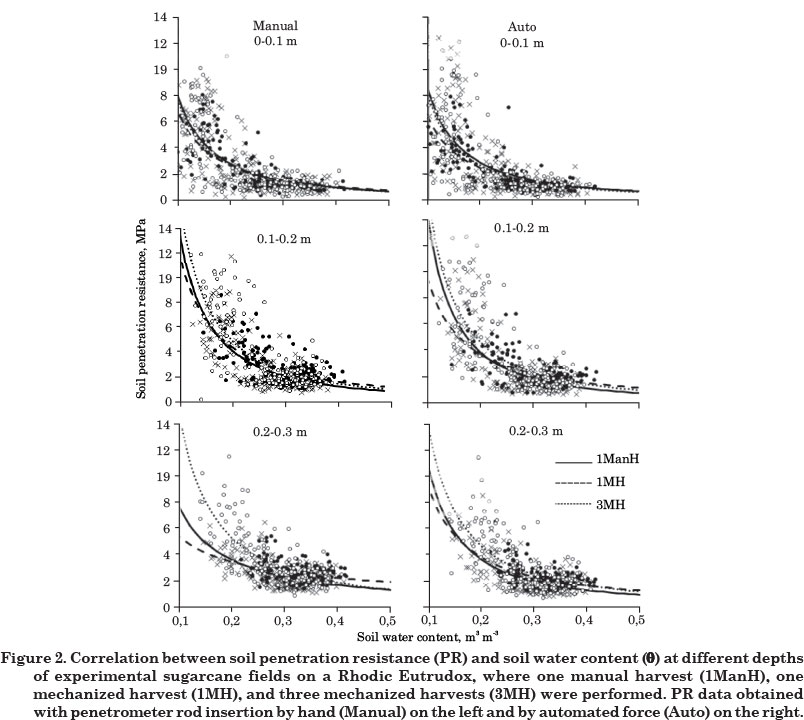Modern agriculture techniques have a great impact on crops and soil quality, especially by the increased machinery traffic and weight. Several devices have been developed for determining soil properties in the field, aimed at managing compacted areas. Penetrometry is a widely used technique; however, there are several types of penetrometers, which have different action modes that can affect the soil resistance measurement. The objective of this study was to compare the functionality of two penetrometry methods (manual and automated mode) in the field identification of compacted, highly mechanized sugarcane areas, considering the influence of soil water volumetric content (θ) on soil penetration resistance (PR). Three sugarcane fields on a Rhodic Eutrudrox were chosen, under a sequence of harvest systems: one manual harvest (1ManH), one mechanized harvest (1MH) and three mechanized harvests (3MH). The different degrees of mechanization were associated to cumulative compaction processes. An electronic penetrometer was used on PR measurements, so that the rod was introduced into the soil by hand (Manual) and by an electromechanical motor (Auto). The θ was measured in the field with a soil moisture sensor. Results showed an effect of θ on PR measurements and that regression models must be used to correct data before comparing harvesting systems. The rod introduction modes resulted in different mean PR values, where the "Manual" overestimated PR compared to the "Auto" mode at low θ.
sugarcane; mechanization; compaction; soil water content








